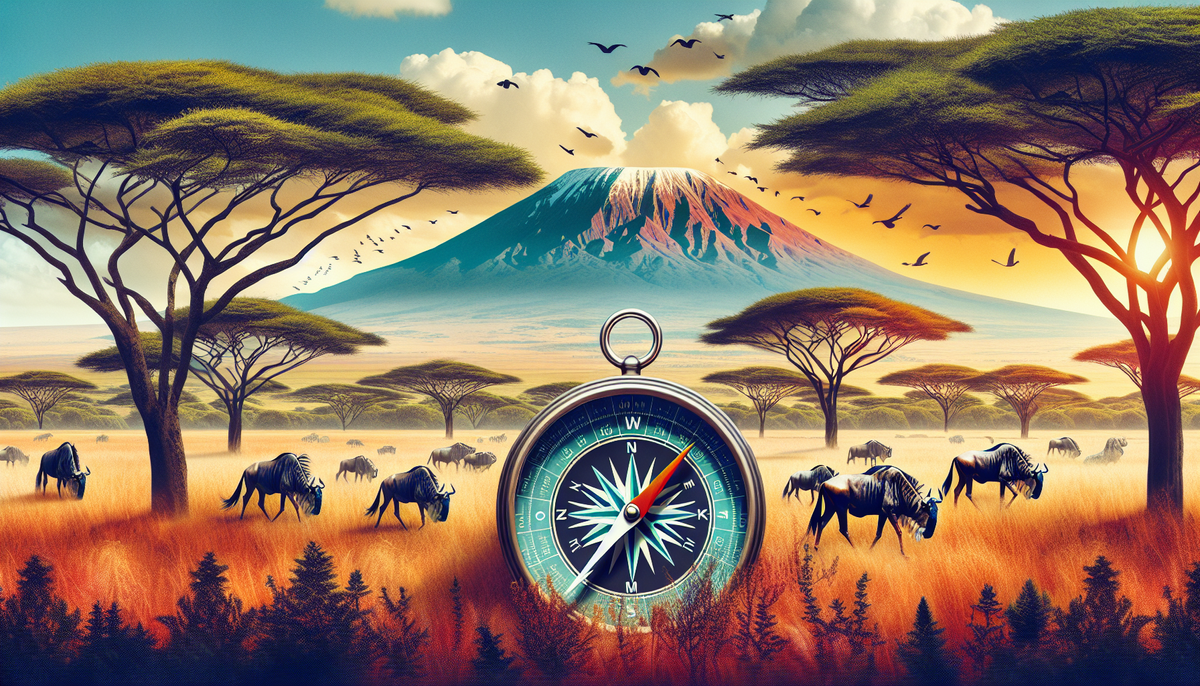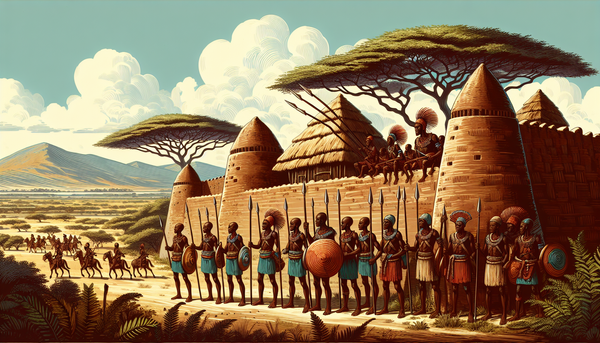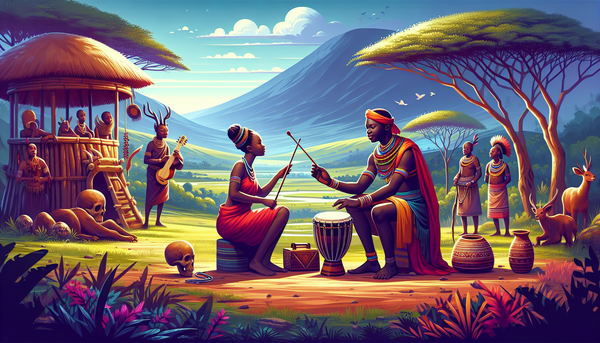The Interplay Between African History and Geography

Influence of Geographic Features on African Civilizations
Africa's diverse geography has profoundly shaped the continent’s civilizations throughout history. Vast deserts, towering mountains, extensive river systems, and fertile plains have influenced patterns of settlement, trade, and cultural development. For instance, the Sahara Desert, while intimidating in its vastness, also served as a natural barrier that shaped trade routes and facilitated the rise of trans-Saharan commerce. Major caravan routes connected sub-Saharan Africa to North Africa, promoting the exchange of goods and ideas, influencing the development of powerful empires like Mali and Songhai.
Additionally, Africa's numerous river systems, such as the Nile and the Congo, have been crucial for sustenance and trade. The Nile River, often referred to as the "lifeblood" of Egypt, supported agriculture that allowed one of the earliest civilizations to flourish. In contrast, geographic features such as the Great Rift Valley created unique habitats that influenced human migration and biodiversity, leading to distinct cultural practices and lifestyles.
Mountains like Kilimanjaro and natural barriers shaped the interactions between neighboring communities, fostering diversity in languages and customs. Overall, the interplay between geography and civilization has been instrumental in forging the rich tapestry of Africa’s history, influencing social structures, economic systems, and cultural identities.
Role of Natural Resources in Shaping African Economies
Natural resources have been a cornerstone in the economic development of African nations, shaping their growth trajectories, social structures, and international relationships. The continent is rich in various resources, including minerals, oil, and agricultural products, which have powered economies and attracted foreign investment. For instance, countries like Nigeria and Angola, endowed with significant oil reserves, have seen petroleum exports drive economic growth and foreign currency inflows. However, this dependence on oil has also made them vulnerable to fluctuations in global prices.
Mineral wealth in regions such as South Africa and Zambia has played a pivotal role in industrial development. Precious metals like gold and diamonds not only attracted investment but also spurred technological advancements. Conversely, the extraction and management of these resources often lead to challenges, such as environmental degradation and socio-economic disparities.
Agricultural resources, comprising fertile lands and diverse climates, have allowed countries like Ethiopia and Kenya to develop robust agricultural sectors, impacting food security and export opportunities. Therefore, while natural resources have the potential to enrich economies, they can also contribute to conflict and inequality without effective governance and sustainable practices. Ultimately, the role of these resources continues to evolve as African economies navigate globalization and strive for diversification.
Climate Variability and Cultural Evolution in Africa
Climate variability has significantly influenced cultural evolution across Africa, deeply interlinking environmental conditions with societal development. Throughout history, shifting climates have dictated agricultural practices, settlement patterns, and community interactions. For instance, the Sahel region experienced cyclical droughts that forced communities to adapt their livelihoods from traditional farming to more resilient strategies, such as pastoralism and trade. This adaptability has fostered rich cultural exchanges among nomadic groups, leading to unique traditions and social structures.
In contrast, the Nile Delta's fertile lands supported stable agricultural growth, allowing ancient Egyptian civilization to flourish, which in turn shaped their religious and societal hierarchies. As climate conditions shifted, regions that once thrived could face scarcity, leading to migrations and conflict, such as the Bantu migrations that spread agricultural innovations across southern Africa.
Climate extremes have also influenced artistic expressions, oral traditions, and community rituals, as societies sought to interpret and respond to environmental changes. Today, the ongoing challenges posed by climate change force African cultures to reassess and adapt, blending traditional knowledge with modern practices to ensure sustainability. Thus, climate variability remains a crucial factor in understanding Africa's diverse cultural landscape, shaping its past and influencing its future.
Impact of Topography on Migration and Settlement Patterns
Topography plays a crucial role in shaping migration and settlement patterns across Africa, influencing where communities establish themselves and how they interact with their environment. The continent’s diverse landscapes, which include mountains, plateaus, plains, and river valleys, dictate the availability of resources, transportation routes, and agricultural opportunities.
For instance, mountainous regions, such as the Ethiopian Highlands and the Drakensberg Mountains in South Africa, have historically acted as barriers to movement, leading to isolated communities with rich, distinct cultural identities. Conversely, the vast plains and river valleys, like the Nile Delta and the Congo Basin, have facilitated the growth of settled agricultural societies, encouraging population density and urbanization.
Furthermore, the Great Rift Valley’s unique geological formations have created fertile land, attracting farming communities while simultaneously providing migration routes for various animal species, which influenced the lifestyles of pastoralists. As climate changes or environmental conditions fluctuate, topographical features can encourage or hinder migration, leading to shifts in demographics.
Understanding the impact of topography on migration and settlement is vital for addressing contemporary issues such as urbanization, resource management, and environmental sustainability, influencing how societies adapt to an ever-changing landscape.
Geopolitical Conflicts and Territorial Boundaries
Geopolitical conflicts in Africa have often been intricately linked to territorial boundaries, many of which were arbitrarily drawn during the colonial era. The legacy of colonialism created states that disregarded ethnic, cultural, and historical realities, leading to tensions between different groups. For instance, in regions like the Horn of Africa, the demarcation of borders created competing national identities, which have fueled conflicts in countries such as Somalia and Ethiopia.
Additionally, resource-rich areas are frequently points of contention, exacerbating geopolitical rivalries. Disputes over access to water sources like the Nile River have often sparked conflicts between upstream and downstream nations, illustrating how territorial resources can heighten tensions. Countries such as Sudan and Egypt have engaged in negotiations and confrontations over water rights, highlighting the significance of geography in these disputes.
Moreover, the ongoing struggle for self-determination in regions like Western Sahara underscores how historical grievances and modern-day politics intersect with territorial boundaries. Despite numerous peace initiatives, unresolved conflicts continue to challenge governance, security, and development efforts across the continent. As Africa navigates its complex geopolitical landscape, understanding the role of territorial boundaries in conflict is essential for fostering lasting peace and stability.
Exploration of River Systems and Their Historical Significance
River systems in Africa have played a pivotal role in shaping the continent's history, serving as vital arteries for transportation, trade, and sustenance. Major rivers like the Nile, Niger, and Congo have not only facilitated the migration of peoples but also supported the rise of powerful civilizations. The Nile River, often hailed as "the lifeblood of Egypt," provided fertile lands that enabled agricultural development, fostering one of the world's earliest and most enduring cultures.
Historically, these river systems enabled trade routes that connected diverse populations, enhancing cultural exchanges and economic interactions. The Niger River facilitated trade across West Africa, significantly contributing to the wealth of empires like Mali and Songhai, which became centers of commerce and scholarship. Similarly, the Congo River served as a crucial trade route, linking interior regions to coastal ports.
Beyond commerce, rivers have shaped social structures and religious practices, often viewed as sacred by indigenous communities. The seasonal floods and fishing resources along these waterways have dictated livelihood strategies and settlement patterns, influencing social organization and governance.
As Africa continues to evolve, the historical significance of its river systems serves as a reminder of their critical role in fostering human connection and cultural development, highlighting the need for sustainable management in light of modern challenges.
Environmental Challenges and Historical Adaptations
Africa's diverse ecosystems have long posed environmental challenges that have required societies to develop innovative adaptations. From recurring droughts in the Sahel to the flooding of the Nile, these challenges have shaped agricultural practices, settlement patterns, and cultural identities across the continent. For instance, the unpredictable climate of the Sahel has led communities to adopt mobile pastoralism, where herders move livestock to find water and grazing, ensuring survival in the face of aridity.
Historical adaptations are also evident in agricultural techniques. Traditional practices such as intercropping and the use of indigenous drought-resistant crops have emerged as effective responses to environmental challenges, allowing communities to enhance food security and sustain their livelihoods. In regions like East Africa, terracing has been employed to combat soil erosion and maximize land use on hilly terrains.
Furthermore, communities have developed rich cultural practices shaped by their interactions with the environment. Rituals and beliefs often revolve around seasonal cycles and resource management, reflecting a deep understanding of ecological dynamics.
Today, as climate change intensifies these environmental challenges, lessons learned from historical adaptations are invaluable. They underscore the importance of integrating indigenous knowledge with modern practices to build resilience and ensure sustainable development in the face of ongoing environmental uncertainties.



